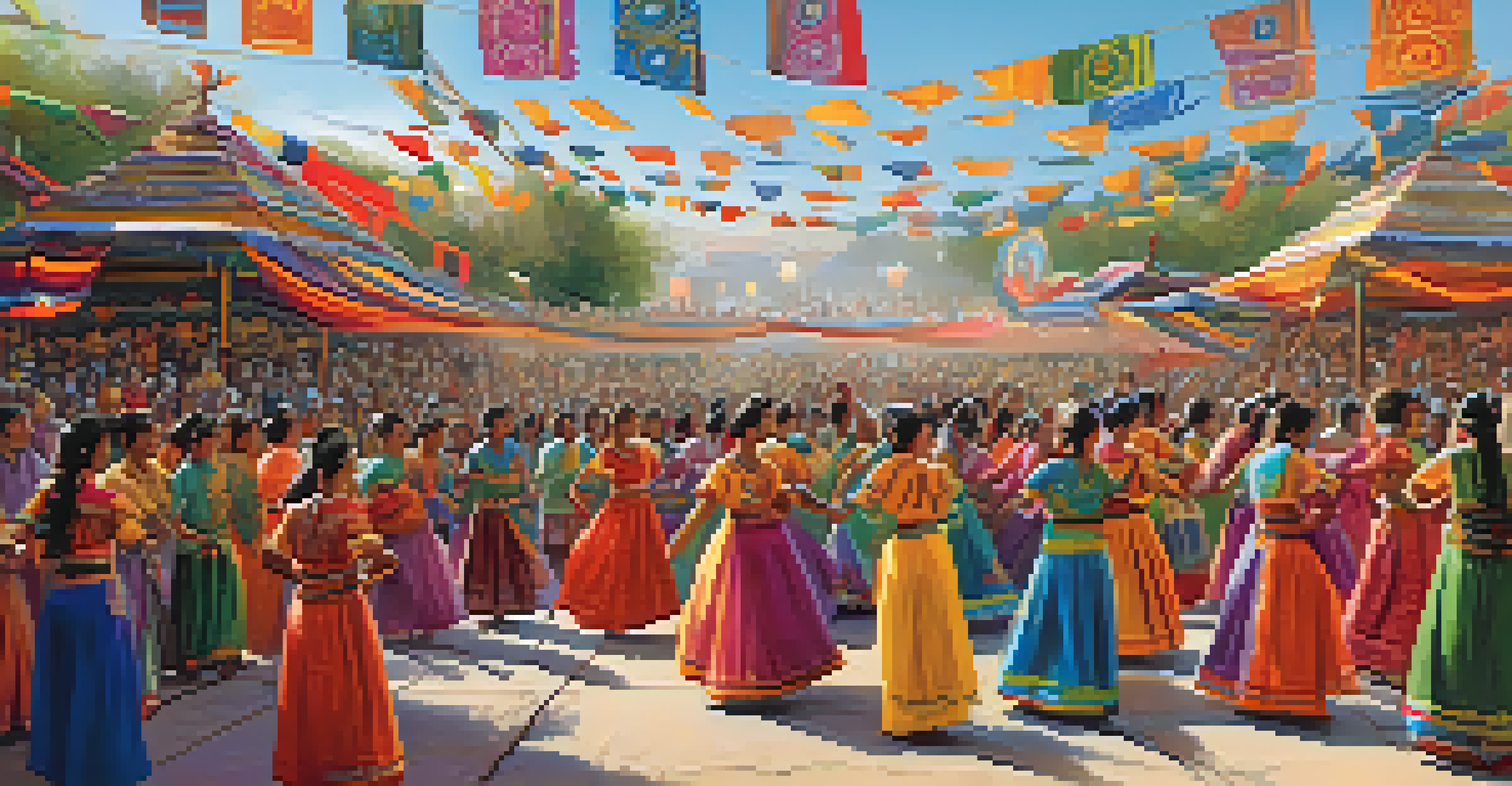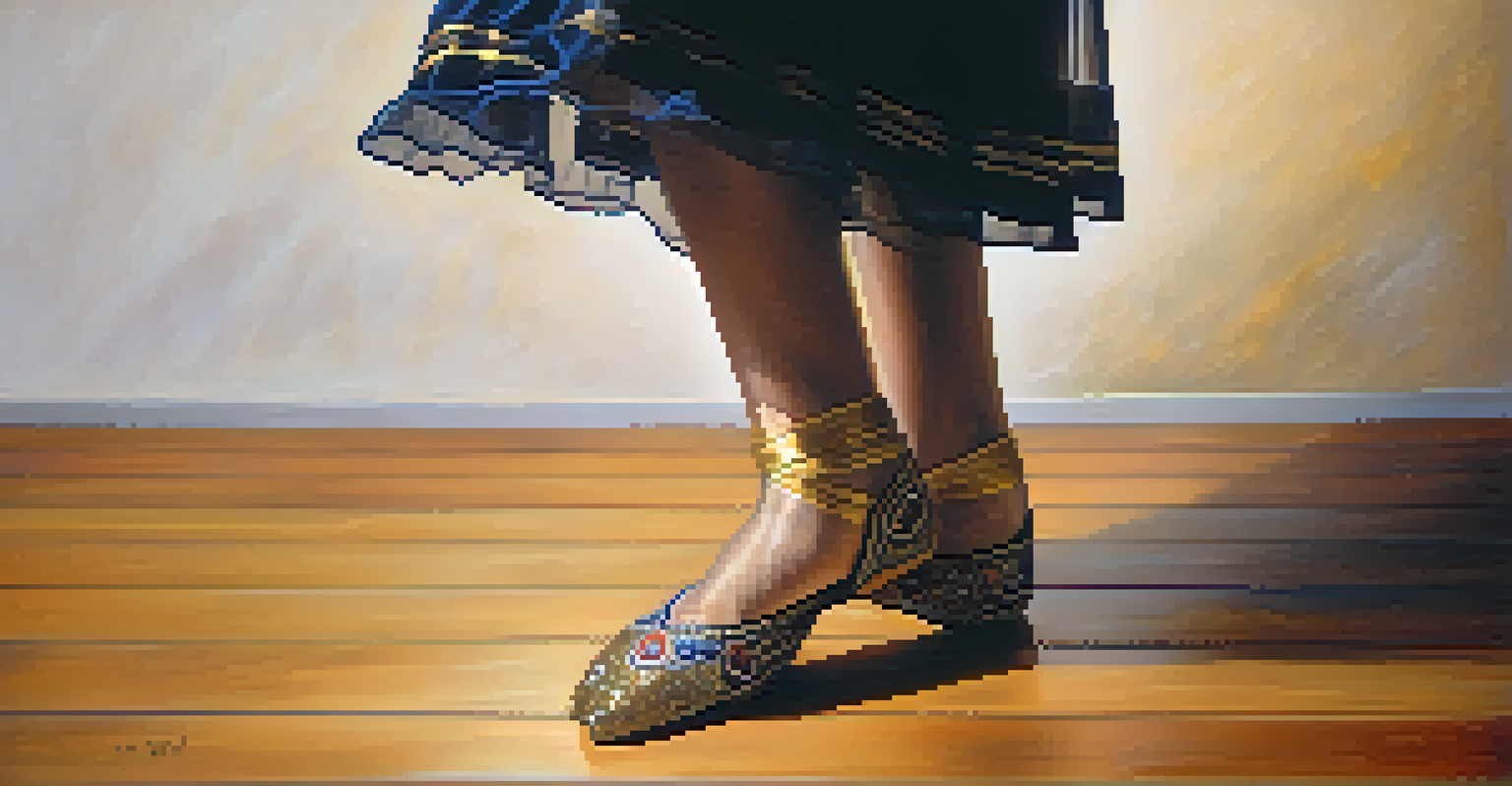The Role of Education in Addressing Dance Cultural Appropriation

Defining Cultural Appropriation in Dance
Cultural appropriation occurs when elements of one culture are taken by another, often without understanding or respect. In the dance world, this can happen when artists borrow styles, movements, or attire without acknowledging their origins. This not only disrespects the culture involved but also dilutes the meaning and significance of the dance forms.
Cultural appropriation is not just about borrowing; it’s about understanding the depth and significance of what you are borrowing.
For instance, consider a popular commercial dance piece that incorporates traditional Hawaiian hula. Without proper context, the beauty and spirituality of hula can be overshadowed, leading to misunderstandings and misrepresentations of Hawaiian culture. Therefore, it's crucial to define what cultural appropriation is and why it matters, especially in creative expressions like dance.
Education plays a key role in helping dancers and choreographers recognize these nuances. By understanding the historical and cultural significance behind various dance styles, artists can make more informed choices, fostering respect rather than appropriation.
The Importance of Cultural Awareness in Dance
Cultural awareness is essential for any artist, and it's especially important in dance, where movement communicates cultural stories and values. A dancer who understands the cultural roots of their movements is better equipped to honor and celebrate those traditions. This awareness can transform performances from mere entertainment into profound expressions of respect and appreciation.

For example, when ballet dancers study the origins of their art form, they learn about its European roots and the evolution it has undergone over centuries. This knowledge allows them to perform with a deeper understanding of the weight their movements carry. Similarly, studying dances from various cultures can lead to richer, more authentic performances.
Understanding Cultural Appropriation
Cultural appropriation in dance occurs when artists borrow elements without acknowledging their origins, leading to disrespect and misrepresentation.
Educational initiatives that focus on cultural history and significance can help dancers appreciate the depth behind their craft. By fostering cultural awareness, artists can create a more inclusive environment that values diversity and encourages collaboration.
Integrating Cultural Education into Dance Curriculum
One effective way to combat cultural appropriation in dance is through the integration of cultural education into dance curricula. Dance programs can incorporate lessons on the historical and cultural contexts of various styles, allowing students to gain a well-rounded understanding. This approach not only enriches their dancing but also instills a sense of responsibility towards the cultures they engage with.
Diversity is the mix. Inclusion is making the mix work.
For instance, dance schools could invite guest instructors from different cultural backgrounds to teach traditional forms. This provides students with first-hand knowledge and insights that textbooks alone cannot offer. Additionally, discussions around respect, representation, and responsibility in dance can help students navigate their artistic choices thoughtfully.
By embedding cultural education into the dance curriculum, we equip future dancers with the tools they need to honor the traditions they draw inspiration from, ultimately fostering a more respectful artistic community.
Encouraging Open Dialogue About Cultural Appropriation
Encouraging open dialogue about cultural appropriation in dance is vital for creating a respectful environment. Conversations can help dancers articulate their thoughts and feelings about appropriation and its implications. By discussing these topics, we dismantle the stigma around addressing cultural sensitivity and promote a culture of respect and understanding.
Workshops, panels, or forums can provide safe spaces for dancers to share experiences and learn from one another. These discussions can cover topics like the difference between appreciation and appropriation, as well as strategies to engage with different cultures respectfully. By fostering this dialogue, we empower artists to make informed choices.
The Role of Cultural Awareness
Cultural awareness in dance allows artists to honor and celebrate traditions, transforming performances into profound expressions of respect.
Moreover, open dialogue encourages collaboration among dancers from diverse backgrounds. By sharing stories and perspectives, artists can create works that reflect a more authentic and inclusive representation of various cultures.
Highlighting Diverse Voices in Dance Education
Highlighting diverse voices in dance education is crucial for combating cultural appropriation. When students learn from instructors who represent a variety of cultural backgrounds, they gain richer perspectives on the dances they study. Diverse voices can share authentic narratives and experiences, offering students a deeper understanding of the art form's cultural significance.
For example, when a student learns hip-hop from a teacher who has lived its history, they gain insights that go beyond basic steps. They learn about the culture, struggles, and celebrations that hip-hop embodies, creating a more meaningful connection to the dance. This approach not only enriches their education but also encourages respect for the culture.
By actively seeking out diverse educators and guest artists, dance programs can create a more inclusive learning environment. This commitment to representation helps ensure that students appreciate the breadth of dance traditions and understand their importance.
Fostering Respectful Collaboration Across Cultures
Collaboration across cultures in dance can lead to beautiful fusion styles, but it's essential to approach such partnerships respectfully. Dancers must prioritize mutual understanding and respect for each other's cultural backgrounds. This ensures that collaborative works celebrate diversity rather than exploit it.
For instance, a project that combines African dance with contemporary styles can be incredibly powerful if done with cultural sensitivity. Dancers should engage with cultural leaders and practitioners to ensure their representation is accurate and respectful. This collaborative spirit can foster a deeper appreciation of both dance forms.
Education as a Change Catalyst
Integrating cultural education into dance curricula fosters respect and understanding, shaping a more inclusive and culturally sensitive dance community.
When educators encourage respectful collaboration, they prepare students to create innovative works that honor their cultural roots. This not only enhances their artistic expression but also builds bridges between different communities, enriching the dance landscape.
The Future of Dance: Education as a Catalyst for Change
As the dance community evolves, education will continue to be a catalyst for change in addressing cultural appropriation. By fostering awareness, respect, and understanding, educational institutions can shape the next generation of dancers who are more culturally sensitive. This shift can lead to a more inclusive and respectful dance landscape.
Moreover, with the rise of social media, dancers have greater access to diverse styles and cultures than ever before. Education can help them navigate this wealth of information responsibly, encouraging them to honor the traditions they choose to engage with. By teaching them the importance of context, educators can empower dancers to make informed artistic choices.

Ultimately, the role of education in addressing dance cultural appropriation is vital for fostering a culture of respect and collaboration. As we look to the future, it’s essential to keep these discussions alive and prioritize cultural sensitivity in all artistic endeavors.